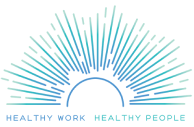As we celebrated mothers this Mother’s Day, we realize how important healthy work is to working mothers (the majority of mothers worldwide). When we think about healthy work, we must also think about gender equity, and other inequalities in the labor market including inequality because of race-ethnicity and socioeconomic status. Women are still paid less than men, are less likely to be hired into leadership positions, and are more likely to be harassed or bullied in their workplaces. Despite global gains in women’s economic participation, the second shift of unpaid work is still being shouldered by working women. Policies that allow flexibility at work (hours, schedules, remote work, paid family/sick leave) for both women and men, are essential to work/life balance, healthy work, and gender equity.
A recent article caught my eye, as the headline suggested that hybrid work (the combination of remote and in-person/office work) may be causing women more stress rather than less. Intrigued, I read the report based on a survey of 5,000 working women across 10 countries by Deloitte Global. The authors suggest “alarming levels” of burnout and stress for women at work. Fifty-three percent of women surveyed reported their stress levels were higher than one year ago and almost half said they felt burned out, and this was particularly higher in part-time workers and ethnic minority groups. Women were more likely to be looking for a new job than a year ago (i.e., the Great Resignation), and 40% of those cited burnout as the major reason. Among those who had recently left an employer (as opposed to thinking of leaving) the main reason was “not enough opportunities to advance” (22%), lack of work/life balance (18%) and pay not high enough (18%).
Despite the pandemic’s shifting work arrangements, or perhaps because of, 47% of women rated their work/life balance as poor or extremely poor. Only 33% of women reported that their employer’s offered “flexible working policies” and over 90% reported asking for flexibility might result in loss of promotion opportunities.
In a 2021 Medium article on remote work, we wrote that we there was some reports of more flexibility in remote or hybrid work; however, 60% of women in this Deloitte report felt “shut out” in a hybrid work environment. It appears that face-time with leadership, being available at all times, and feeling excluded when not physically present are major obstacles and have not helped women achieve better work/life balance and may be leading to burnout.
The World Economic Forum’s Global Gender Gap Report suggests the COVID-19 pandemic has impacted the global gender gap in economic participation. Gender parity in economic participation is an important global goal, but according to the WEF, the index results show only 58% of the gap has closed and it will take 267 years to close. Projections show that during the pandemic, 5% of all employed women globally lost their jobs compared to 3.9% of men and there was a decline in women being hired into leadership positions. The pandemic brought a longer “double shift” of paid and unpaid work because of school closures and a lack of paid care services which may be contributing to women’s burnout.
Our struggle for healthy work is a struggle for gender equity. By reducing work stressors–including workload, work hours, and improving social support, we can improve work/life balance for women and for men.






